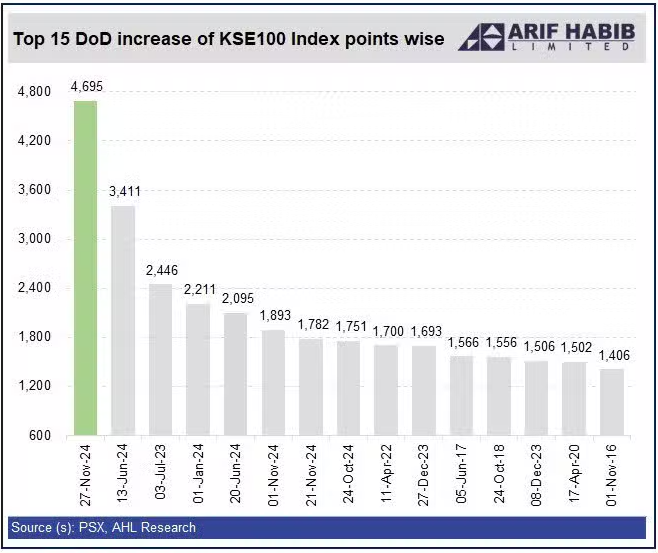Pakistan’s economy is grappling with multiple challenges, including fiscal deficits, low savings, limited investment, low foreign exchange reserves, economic uncertainty, and rising external debt, which is projected to reach approximately $131.159 billion by the end of the first half of the fiscal year 2024 (July-Dec).
State-owned enterprises (SOEs) add a significant burden to the struggling economy. These entities are often loss-making and have required repeated government bailouts, leading to substantial losses for the national exchequer. As of December 2023, the total outstanding debt and liabilities of these enterprises stood at PKR 2.35 trillion. In a bid to achieve fiscal discipline and stabilize the economy, the government has decided to privatize unprofitable SOEs, with Pakistan International Airlines (PIA) being a top priority.
The Rise and Fall of Pakistan International Airlines (PIA)
PIA was established on January 10, 1955, through a merger with Orient Airways, which was founded in 1946. Under visionary leaders like Air Marshal Nur Khan and Air Marshal Muhammad Asghar Khan, the national flag carrier gained global prominence by expanding its fleet and developing extensive air routes.
However, PIA began facing financial challenges in 2008. By June 2022, the airline’s balance sheet showed a negative equity of PKR 490 billion, including significant bank loans and other payables. As of the same date, total outstanding bank loans and government guarantees amounted to PKR 109 billion and PKR 268 billion, respectively.
Several factors contributed to PIA’s decline, including political interference, a politicized and poorly trained workforce, an outdated fleet, and high operational expenses. The airline also faced competition due to the ‘Open Sky Policy,’ leading to a decline in market share. Frequent management changes, union influence, political interventions, wasteful spending, unchecked borrowing, and a lack of internal accountability mechanisms further exacerbated PIA’s woes.
Additional challenges included a fake pilot license scandal, poor airport infrastructure, operational inefficiencies, flight delays, and corruption in the Cargo department. Union protests, rising fuel prices, and an EU-imposed safety ban on PIA’s flights to Europe in 2007 worsened the situation, resulting in total financial losses of up to PKR 724 billion by the end of 2023.
Privatization as a Solution
To address these financial and governance issues, the Government of Pakistan (GOP) plans to partially privatize PIA by selling 51% of its shares and management rights. This restructuring aims to separate aviation-related components from non-core elements, thus relieving some debt burden.
A PIA holding company has been established to manage airline debt, including PKR 243 billion owed to domestic commercial banks and a foreign loan of $88 million. This company will facilitate privatization by assisting with asset transfers.
On March 27, 2024, a board consisting of seven members, headed by former central bank Governor Tariq Bajwa, endorsed a scheme of arrangement approved by both stakeholders and creditors. The sell-off is expected to generate $250-300 million for the government, although the actual value could differ. The Federal Minister for Privatization and Investment Board, Abdul Aleem Khan, announced that the Privatization Commission has received expressions of interest from eight major business groups, indicating strong interest in PIA’s future.
Expected Outcomes and Challenges
The privatization initiative is anticipated to lead to a positive transformation, enhancing efficiency and productivity, attracting private investment, and improving competitiveness and service quality while safeguarding public interests. However, it is crucial to regulate the process to prevent potential negative outcomes such as increased unemployment, limited access to flight routes in marginalized regions, and monopolistic practices.
To fully capitalize on privatization, Pakistan can draw lessons from successful experiences in other countries. For example, Sri Lanka, the United Kingdom, Latin America, France, and Germany have turned their loss-making SOEs into profitable entities. The privatization of Sri Lanka Telecom in 1997 and Sri Lankan Airlines in 1998 transformed them into efficient and profitable businesses.
Similarly, the privatization of British Airways, Lufthansa, and Air France illustrates the success of airline privatization in Europe. British Airways was privatized in 1987 and has since become one of the leading airlines. Lufthansa, privatized in 1994, now ranks as the fourth-largest airline in terms of revenue.
These countries followed a similar privatization process, including intra-firm planning, streamlining procedures, and broader changes such as alliances and mergers. The 3Cs framework—Competition, Cooperation, and Consolidation—summarizes the reasons behind the successful privatization of these entities.
Conclusion
The successful privatization of these organizations offers valuable guidance for Pakistan’s privatization of PIA and other SOEs. Establishing a stable macroeconomic framework and developing institutional capacity with strong regulatory bodies is essential to oversee the restructuring phase post-privatization. A clear, comprehensive, and coordinated approach that considers all parties’ interests and prioritizes transparency, inclusivity, and affordability for consumers can help achieve favorable privatization outcomes. This includes reducing the fiscal burden and paving the way for sustainable development while safeguarding public interests.

 Business11 months ago
Business11 months ago
 Sports11 months ago
Sports11 months ago
 Entertainment11 months ago
Entertainment11 months ago
 News11 months ago
News11 months ago
 Entertainment10 months ago
Entertainment10 months ago
 General11 months ago
General11 months ago
 Sports11 months ago
Sports11 months ago
 Sports11 months ago
Sports11 months ago




















